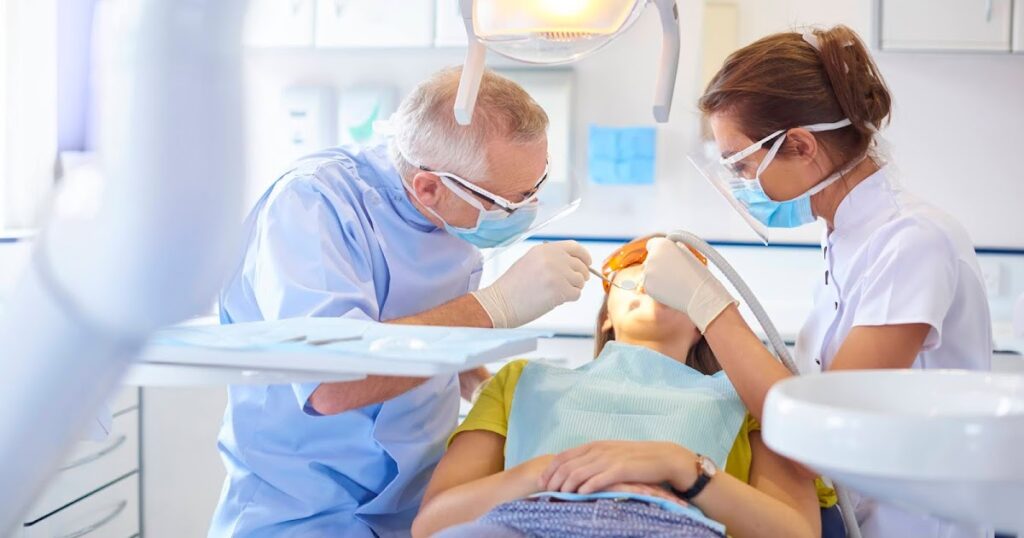If you’re a teenager dealing with jaw pain, clicking sounds when you chew, or headaches that won’t go away, you might be experiencing TMJ disorder. The good news? You’re not alone, and there are plenty of ways to find relief. Let’s dive into everything you need to know about TMJ problems and how to manage them effectively. Understanding TMJ Disorder in Teenagers The temporomandibular joint (TMJ) connects your jawbone to your skull, acting like a sliding hinge that allows you to talk, chew, and yawn. When this joint becomes irritated or inflamed, it can cause a condition known as TMJ disorder or TMD (temporomandibular disorder). For teenagers, this condition is surprisingly common and can significantly impact daily life, making TMJ pain relief a crucial topic to understand. Several factors make teens particularly susceptible to TMJ problems. The stress of school, sports injuries, orthodontic treatment, and even habits like chewing gum excessively can all contribute to jaw joint issues. Additionally, the hormonal changes during adolescence can affect joint health and muscle tension, potentially triggering or worsening TMJ symptoms. Common Symptoms Teens Experience TMJ disorder manifests differently in everyone, but teenagers often report specific symptoms that interfere with their daily activities. The most common symptoms include: • Jaw pain or tenderness – especially when eating or talking • Clicking or popping sounds – when opening the mouth, which can be embarrassing in social situations • Headaches – typically starting near the temples and radiating across the forehead • Ear pain or fullness – even though hearing remains normal • Jaw locking – In severe cases, the jaw might lock in an open or closed position These symptoms can range from mild discomfort to severe pain that interferes with daily activities like eating, speaking, or sleeping. Root Causes of TMJ Problems in Teens Understanding what triggers TMJ disorder in teenagers is crucial for effective treatment. One of the primary causes is stress and anxiety, which are unfortunately common during the teenage years. Academic pressure, social challenges, and extracurricular commitments can lead to unconscious jaw clenching or teeth grinding, particularly during sleep. Physical factors also play a significant role. Sports injuries, especially those involving contact to the face or jaw, can damage the TMJ. Poor posture, increasingly common due to excessive screen time, puts extra strain on the neck and jaw muscles. Additionally, orthodontic treatment, while necessary for many teens, can temporarily affect jaw alignment and contribute to TMJ discomfort. Professional TMJ Pain Relief Options When home remedies aren’t enough, professional treatment becomes necessary for effective TMJ pain relief. Dentists and orthodontists specialising in TMJ disorders can provide customised treatment plans. One common approach involves creating a custom night guard or splint to prevent teeth grinding and reduce jaw muscle tension during sleep. Physical therapy is another effective professional treatment option. Specialised exercises can strengthen jaw muscles, improve range of motion, and reduce pain. Some physical therapists also use techniques like ultrasound therapy or electrical stimulation to provide relief. In rare cases where conservative treatments fail, more advanced interventions like corticosteroid injections or arthroscopic surgery might be considered, though these are typically reserved for severe cases. At-Home Remedies for Immediate Relief Fortunately, many TMJ symptoms can be managed with simple at-home treatments. Applying ice packs to the jaw area for 10-15 minutes can reduce inflammation and numb pain. Alternating with heat therapy, such as a warm compress, can help relax tense muscles and improve blood flow to the area, providing natural TMJ pain relief without medication. Dietary modifications can provide significant relief. Switching to softer foods temporarily reduces strain on the jaw joints. Avoid chewy foods like gum, tough meats, or hard candies. Instead, opt for smoothies, soups, pasta, and other foods that require minimal chewing. Gentle jaw exercises, such as slowly opening and closing the mouth or moving the jaw side to side, can also help maintain flexibility and reduce stiffness. Stress Management Techniques Since stress is a major contributor to TMJ problems in teenagers, learning effective stress management techniques is essential for long-term relief. Regular exercise not only reduces overall stress but also helps release muscle tension throughout the body, including the jaw area. Activities like yoga or swimming are particularly beneficial as they promote relaxation while providing low-impact exercise. Mindfulness and meditation practices can help teens become more aware of jaw clenching habits and learn to consciously relax their facial muscles. Even simple breathing exercises performed for a few minutes daily can make a significant difference. Many teens find that keeping a stress journal helps them identify triggers and develop better coping strategies for challenging situations. The Role of Technology and Gaming Modern teenage life involves significant screen time, whether for schoolwork, social media, or gaming. This constant technology use can contribute to TMJ problems through poor posture and increased stress. When using devices, teens often crane their necks forward, creating tension that extends to the jaw muscles. Gaming, in particular, can be problematic due to the intense concentration and potential stress involved. Competitive gaming sessions can lead to unconscious jaw clenching. To minimise these effects, teens should take regular breaks, maintain proper posture with screens at eye level, and be mindful of jaw tension during intense gaming or study sessions. When to Seek Professional Help While many TMJ symptoms can be managed at home, certain signs indicate the need for professional evaluation. If jaw pain persists for more than a week despite home treatment, or if the pain is severe enough to interfere with eating or sleeping, it’s time to consult a healthcare provider. Similarly, if the jaw locks frequently or if there’s significant swelling around the joint, professional assessment is necessary. Teens should also seek help if TMJ symptoms are accompanied by frequent headaches, earaches, or vision problems. These could indicate more complex issues requiring specialised treatment. Don’t hesitate to speak up about symptoms – early intervention often leads to better outcomes and prevents the condition from becoming chronic. Prevention Strategies for Teens Preventing TMJ problems is often



